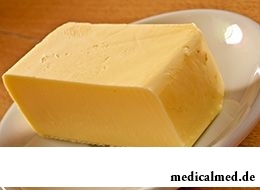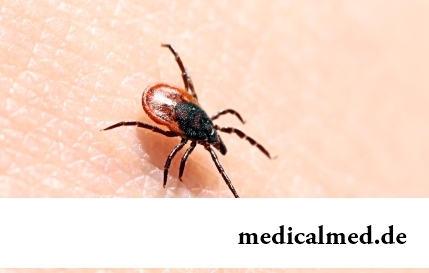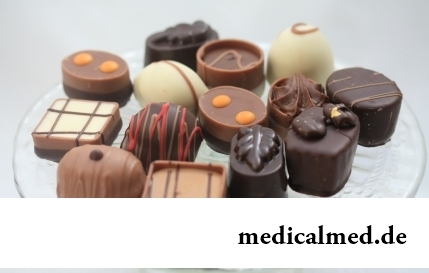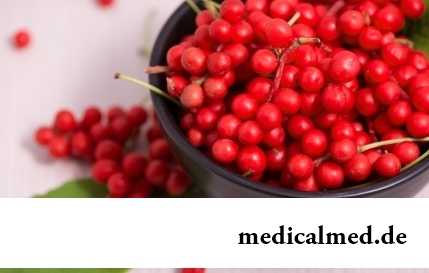





Oil caloric content
Butter – the dairy product produced by beating of the fresh or fermented cream or milk. As a rule, the caloric content of butter is much higher, than in other dairy products therefore it is used for frying, preparation of various pastries and sauces.
Palm-oil – the edible vegetable oil received from fruits of oily palm trees, first of all, from fruits of the African palm tree of Elaeis Guineensis. Palm-oil of reddish-orange color because of high content of beta carotene in it. Palm-oil in food is used for preparation of fats for glaze, confectionery fats, substitutes of milk fat, nachinochny fats, spreads, equivalents of cocoa butter and shortening, and also as frityurny fat for frying. Also palm-oil in food meets in the syrkovy masses, mayonnaise, processed cheeses, bulk margarine and soup mixes.
Sunflower oil – the vegetable oil which is squeezed out of sunflower seeds. Sunflower oil which caloric content is very high is widely used in cookery as oil for frying and in cosmetic structures as a softener.
Vegetable oil represents the triglycerides of fatty acids extracted from vegetable raw materials. For preparation of vegetable oil use:
- Seeds of plants (flax, colza, sunflower, sesame, thistle, hemp, soy, cotton, mustard and black caraway seeds);
- Fruits of a palm tree and olive;
- Fruit stones of cherry, apricot and grapes;
- Seeds of a water-melon, pumpkin, sea-buckthorn, melon and fir;
- Nuts.
Useful properties of oil
Its ability to reduce risk of development of cardiovascular diseases, and also to warn heart attack belongs to useful properties of sunflower oil which caloric content makes 889 kcal on 100 ml.
The daily use of sunflower oil helps to prevent a pseudorheumatism, asthma and a colon cancer. Caloric content of oil of sunflower is caused by the high content of fats in this product.
Butter caloric content, as we know, is quite high as well as the content in it of cholesterol that forces to doubt usefulness of this product. However, despite such powerful arguments, butter has a number of properties, useful to an organism, namely:
- Oil contains the lauric acid necessary for treatment of fungal infections and candidiasis;
- It contains the lecithin necessary for cholesterol metabolism;
- Oil is rich in antioxidants which protect an organism from damage by free radicals;
- Is a fine source of vitamins E and To, and also important mineral salts;
- Saturated fats in oil have antineoplastic and anticarcinogenic properties;
- Oil contains the conjugated linolic acid which is powerful anticarcinogenic tool and increases immunity;
- The vitamin D which is contained in butter is necessary for calcium absorption;
- Butter is a rigidity anti-coefficient source which protects an organism from calcification of joints;
- Contains arachidonic acid which plays an important role in functioning of a brain and is the vital component of cellular membranes.
Palm-oil which caloric content is equal to sunflower oil is a good source of vitamin A. It is applied to increase in speed of metabolism, at treatment of high blood pressure, and also at poisoning with cyanide. In the industry palm-oil is used for production of cosmetics, soap, toothpaste, vosk, lubricants and ink.
Oil caloric content: nutrition and energy value of a product
Caloric content of oil is quite high, however it does not prevent broad use of this product in cookery, dietology and cosmetology.
Nutrition value and caloric content of oil at the rate on 100 g depending on a look makes:
- Butter: fats – 72,11 g, saturated fats – 51,368 g, polyunsaturated fats – 3.043 g, monounsaturated fats – 21.021 g, cholesterol – 180 mg, sodium – 11 mg, potassium – 24 mg, carbohydrates – 1,2 g, sugar – 0,06 g, proteins – 0,85 g, water – 25 g, RR vitamin – 0,6 mg, beta carotene – 0,3 mg, B2 vitamin – 0,12 mg, vitamin E – 1 mg, B5 vitamin – 0,05 mg, thiamin – 0,01 mg, calcium – 24 mg, phosphorus – 30 mg, magnesium – 0,4 mg, iron – 0,2 mg, is gray – 8 mg, copper – 2,5 mkg, zinc – 0,1 mg, manganese – 0,002 mg and vitamin A – 0,6 mg. Caloric content of butter makes 670 kcal;
- Sunflower oil: fats – 99,9 g, water – 0,1 g, saturated fatty acids – 12,5 g, unsaturated fatty acids – 65 g, vitamin E – 44 mg and phosphorus – 2 mg. Caloric content of sunflower oil makes 899 kcal;
- Palm-oil: fats – 99,9 g, water – 0,1 g, saturated fatty acids – 48 g, unsaturated fatty acids – 10 g, vitamin E – 33,1 mg and phosphorus – 2 mg. Caloric content of palm-oil makes 899 kcal;
- Olive oil: fats – 99,8 g, water – 0,2 g, saturated fatty acids – 16,8 g, unsaturated fatty acids – 13,2 g, vitamin E – 12,1 mg, phosphorus – 2 mg and iron – 0,4 mg. Caloric content of olive oil makes 898 kcal;
- Rape oil: fats – 99,9 g, water – 0,1 g, saturated fatty acids – 10 g, unsaturated fatty acids – 33 g, vitamin E – 18,9 mg and phosphorus – 2 mg. Caloric content of oil rape makes 899 kcal;
- Linseed oil: fats – 99,8 g, water – 0,2 g, saturated fatty acids – 9,6 g, unsaturated fatty acids – 67,7 g, vitamin E – 2,1 mg and phosphorus – 2 mg. Caloric content of linseed oil makes 898 kcal;
- Sesame oil: fats – 99,9 g, water – 0,1 g, saturated fatty acids – 14,2 g, unsaturated fatty acids – 42,5 g and vitamin E – 8,1 mg. Caloric content of oil sesame makes 899 kcal;
- Hempy oil: fats – 99,9 g, water – 0,1 g, saturated fatty acids – 9,5 g, unsaturated fatty acids – 79 g and vitamin E – 5,7 mg. Caloric content of oil hempy makes 899 kcal;
- Soy oil: fats – 99,9 g, water – 0,1 g, saturated fatty acids – 16 g, unsaturated fatty acids – 60 g, vitamin E – 17,1 mg, phosphorus – 2 mg, iron – 0,05 mg and zinc – 0,01 mg. Caloric content of oil soy makes 899 kcal;
- Mustard oil: fats – 99,8 g, water – 0,2 g, saturated fatty acids – 6,1 g, unsaturated fatty acids – 31,5 g, vitamin A – 0,2 mg, beta carotene – 0,15 mg, vitamin E – 17,1 mg, vitamin A (RE) – 25 mkg, vitamin E (TE) – 9,2 mg and phosphorus – 2 mg. Caloric content of oil mustard makes 898 kcal;
- Peanut butter: fats – 99,9 g, water – 0,1 g, saturated fatty acids – 22,2 g, unsaturated fatty acids – 29 g, vitamin E (TE) – 16 mg and phosphorus – 2 mg. Caloric content of peanut butter makes 899 kcal;
- To calculate how many calories in an oil spoon, it is necessary to define how many the ml contains in a spoon. So, the volume of 1 tbsp makes from 12 to 17 g, and the caloric content of vegetable oil, on average, makes 900 kcal. Respectively a caloric content of 1 tbsp of vegetable oil will make from 108 to 153 kcal. The volume of 1 tsp makes 5 g, and the caloric content of vegetable oil of 1 tsp will make 45 kcal.
- To calculate how many calories in a spoon of oil creamy or any other, are enough knowledge of the caloric content of 100 g of a product and volume of 1 tsp and 1 tbsp.
According to researches, the women drinking several glasses of beer or wine in a week have the increased risk to develop breast cancer.

The mankind knows that some toxins at intake in the minimum quantities have therapeutic effect...
Section: Articles about health
Life of the modern child is extremely active and difficult. Information strain which is experienced by the school student and did not dream pupils of last times. Careful parents, wishing well to the children, will organize a set of additional classes in circles, sports...
Section: Articles about health
Today about 30 diseases, sexually transmitted are known. Wide circulation of these illnesses is extremely promoted by the dual attitude towards them: on the one hand, most of people know about "shameful" diseases very little and do not aim at receiving detailed and reliable information, considering that such problems personally will never concern them. With another – there are delusions about STD which instill unreasonable confidence that troubles such...
Section: Articles about health
Childbirth is the most important event in life of each woman. We are women we give birth to the new little man on this light. Now...
Section: Articles about health
A lot of things depend on a condition of a backbone in a human body, a backbone - not only a support for a body, it also a receptacle for a spinal cord, that is why malfunctions with a backbone are so dangerous. To treat rachis diseases very difficult and long...
Section: Articles about health
In consciousness of our many compatriots idea that folk remedies if are no more effective, than medicinal "chemistry" strongly took roots, then are precisely less harmful. Unfortunately, it is not always fair: some methods of treatment consecrated with "century national experience" can work so on the patient that it will need urgent intervention of physicians....
Section: Articles about health
We live during an advertizing era. Daily each person receives a solid portion of persuasive councils about what to eat to be здо...
Section: Articles about health
On health of the person physicians know about salutary action of animals long ago. About 7 thousand years ago great Hippocrates recommended to the patients riding walks for strengthening of a nervous system and increase in vitality....
Section: Articles about health
Tuberculosis – a serious infectious disease which development is caused by mycobacteria (Koch's bacilli). The illness is known from an extreme antiquity. Long time fight against it was considered as ineffective. Quite often the disease affected the whole families, and mortality from it was very high. It became the reason of emergence of a set of delusions concerning transmissibility and a possibility of treatment of tuberculosis....
Section: Articles about health
Scientists always aimed to offer fundamental explanations for medical problems. Their theories formed the basis of modern methods is treated...
Section: Articles about health
Beauty shop – the place which is associated only with positive emotions: joy, pleasure, relaxation. However visit of salon where work with biological material of clients, not always harmlessly is conducted. Today it is known Bol...
Section: Articles about health
Tick-borne encephalitis – one of the most dangerous viral diseases which causative agents transfer and is given to people by ixodic mites. These are the small blood-sicking insects living in the considerable territory of our country. The person bitten by a tick can catch also erlikhiozy, bartonnelezy, babeziozy, mycoplasmosis and Lyme's disease. As well as encephalitis, these illnesses affect the central nervous system, and as specific antiviral therapy does not exist, the forecast very to a neuta...
Section: Articles about health
Proofs of efficiency of Mildronate at treatment of coronary heart disease with stenocardia can be found in many publications to...
Section: Articles about health
Life does not indulge the modern woman special emotional comfort and carelessness. The fatigue, troubles at work, misunderstanding in a family and various illnesses immediately affect a condition of hair and skin. And to look safe and attractive so хоч...
Section: Articles about health
Within several decades of our compatriots convinced that the use of butter nasty affects a condition of coronary vessels. As a result the reputation of a product was impaired thoroughly a little, and many almost ceased to include it in the diet, having given preference "to safer" to vegetable fats. Meanwhile, the last researches showed that harm of butter for health is strongly exaggerated. But the product has a number of unique properties, to...
Section: Articles about health
Urogenital candidiasis (milkwoman) – a fungal infection which annoys unpleasant feelings in the field of generative organs, сопр...
Section: Articles about health
Any person who faced a disease knows that treatment costs expensive. It belongs also to consultations of qualified specialists, and to the diagnostic procedures which are not included in the list of obligatory medical services. Question of cost of medicinal Wednesday...
Section: Articles about health
Statistically, pathologies of a thyroid gland in the world more than 500 million people have. Failures in work of this body lead to heavy disbolism, development of heart diseases, vessels, a reproductive and nervous system. In hard cases excess or insufficient production of the main hormones of a thyroid gland (thyroxine and triiodothyronine) leads to essential decline in quality of life and disability....
Section: Articles about health
Practice of use of table salt in the therapeutic purposes contains not one century. Appl are considered especially effective...
Section: Articles about health
The stroke is one of the most widespread diseases of the person, annually in the world about 6 million cases of this pathology are registered. According to medical statistics, strokes occur almost three times more often than myocardial infarctions. Disease otno...
Section: Articles about health
80% of women at least once to lives complained of discomfortable feelings to breasts, consolidations and nagrubaniye. These are mastopathy symptoms. The mastopathy is characterized by change of a ratio between ferruterous and connective tissue tissues of mammary glands. It can lead to formation of cysts (a cystous mastopathy), gland consolidation (a fibrous mastopathy), or a combination of these processes (a fibrous and cystous mastopathy)....
Section: Articles about health
Statistically cystitis 25-30% of women up to 40 years have. With age this indicator raises, besides many do not get in to become...
Section: Articles about health
The depression not without reason is considered one their main troubles of our century: for scientific and technical progress, acceleration of rate of life and a surplus of information of people it is forced to pay with stresses, negative emotions and weakening of protective forces of an organism. As a result ш...
Section: Articles about health
Osteoporosis this general disease which main sign is decrease in density of a bone tissue. On distribution width it takes the fourth place among noninfectious diseases. The illness develops at mature age more often: in our country about a third of women and a quarter of men suffers from it 50 years are more senior....
Section: Articles about health
The drugs stopping or oppressing life activity of pathogenic microorganisms are widely applied in clinical practice with 4...
Section: Articles about health
The number of long-livers is very small. One person from 5 thousand lives up to age of 90 years, and the centenary boundary steps over only one of 20 thousand. However, doctors claim that each of us is quite able to affect own destiny. At the same time speech to Ida...
Section: Articles about health
Each person knows that fervescence is an illness sign. However too low temperature (hypothermia), especially also can demonstrate existence of diseases when it is observed long enough. Such state is dangerous that it, unlike fever, does not give a serious inconvenience: patients usually complain only of weakness, drowsiness, apathy. Sometimes the fever and a cryesthesia in extremities joins. Many people at similar symptoms...
Section: Articles about health
